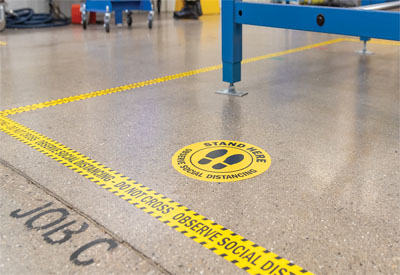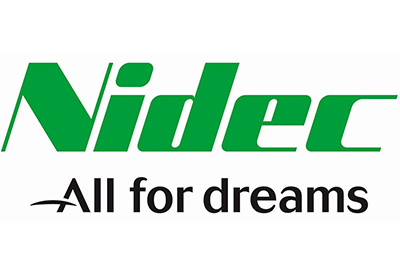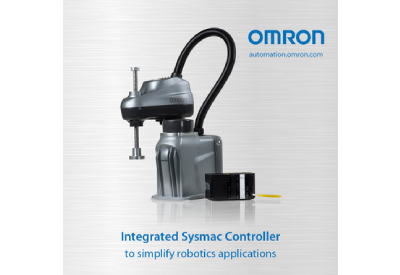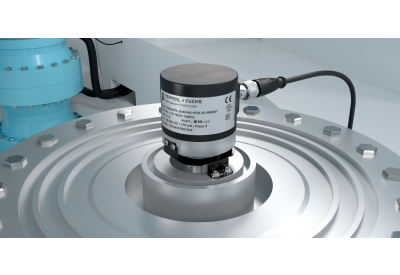Engineering Tomorrow Helps Convention Centre Exhibit Major Pump Savings
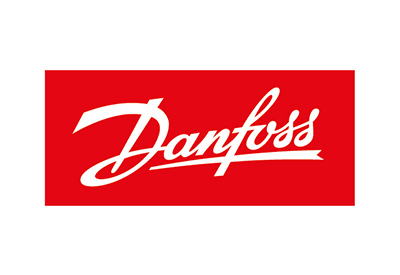
December 3, 2019
With more than one million square feet of exhibit and meeting space, the LEED Platinum-certified Enercare Centre at Exhibition Place in Toronto, Ontario, is the ninth-largest convention centre in North America. Located on the shores of Lake Ontario, the convection centre experiences the extreme weather that the Great Lakes region is known for – with temperatures ranging from -31°C (-24°F) to 40°C (105°F).
That puts a big burden on Exhibition Place’s HVAC equipment to keep the pace comfortable for more than 5.5 million visitors attending meetings, conventions, and exhibitions throughout the year. The amount of energy consumed for heating and cooling the space is significant – more than 380,000 kW hours per year just to power the pumps that circulate chilled or hot water to fan-coil and air handlers located throughout the facility.
As one of North America’s largest home and commercial services and energy solutions companies, Enercare Inc. is committed to energy conservation, so it’s no surprise as the venue’s naming sponsor that it strongly supports Exhibition Place’s innovative GREENSmart program. The program implements numerous committed energy and waste-reductions initiatives – which included retrofitting 11 pumps with Danfoss VLT HVAC Drives under Toronto Hydro’s PUMPsaver program. Completed in May 2018, the project slashed pump energy consumption by up to 38 percent. For qualifying facilities with closed-loop hydronic pumps, the PUMPsaver program covered 100 percent of project costs, giving Enercare Centre an immediate return on investment (ROI).
Many utilities provide various incentives to business customers to encourage installation of variable frequency drives (VFDs) for fans and pumps, according to Irina Sivryukova, administrative lead, Energy Services Division of Kildonan Energy, and Rajiv Harnarain, B.Eng., CEM, Energy Services Division of Kildonan Energy. Kildonan Energy is an Ontario firm specializing in turnkey engineered VFD solutions for HVAC, and served as the exclusive partner for the PUMPsaver program offered by Toronto Hydro from 2016 through April 2019. The firm completed more than 650 projects under the program and continues to work with similar utility programs today.
VFDs cut energy consumption on constant-flow pumps
“Applying Danfoss VLT FC 102 variable frequency drives dramatically improved pump motor efficiency for Enercare Centre,” explained David Sage, owner of Kildonan Energy. “The hydronics-systems design employed constant-speed pumps in circuits using balancing valves that functioned like brakes to regulate fluid flow. As chilled or hot water circulates to fan-coil or air-handling units in the loop, the valves throttled open or closed to deliver the needed water supply.”
Sage noted that “using a balancing valve to regulate a constant-speed, constant-flow system is like keeping your foot on a car’s accelerator and tapping the brakes to control motion. It wastes a lot of energy.”
To improve energy efficiency, a Danfoss VLT variable frequency drive was added to each of the pumps in the system. The VFDs are designed to vary the speed of the motor, allowing the pump to match the system load requirements without the need for mechanical balancing calves. Using a flow meter to verify results, the VFDs are tuned back to match the existing flow of the system once the mechanical balancing valve is opened to its maximum position. By opening the balancing valve, the system resistance drops significantly and the power requirements are reduced.
A VFD solution not only eliminates wasted energy inherent in using balancing valves, it also runs the pump at its optimal efficiency points. Similar to how a car’s performance is measured in horsepower, torque, and speed, a pump’s performance is measured in motor power (kilowatts or horsepower), speed (RPMs), head pressure (psi), and flow (gal/min). The physics of a rotating centrifugal impeller is most efficient at specific speeds, pressures, and flows, creating points that can be graphically mapped as a “pump curve”.
The Danfoss VFDs can not only run the pump motors at reduced speed, but also at the efficiency points on the flow/head pump curve. From the motor’s point of view, riding the pump curve minimizes wear and tear on the pump impellers and bearings and reduces operating noise levels. From the system’s view, the fan coil and air handling units see the flow rate and head pressure they are designed for.
From an energy point of view, the physics of Affinity Laws for centrifugal impeller pumps state that power consumption can be reduced by the cube of the change in speed. In other words, running the pump motor at four-fifths speed (80%) theoretically reduces power consumption by half (50%).
Not every pump application can take advantage of the Affinity Law for power. For example, applications using a valve to throttle the output flow will increase head pressure, which makes the pump work harder and wastes less energy. In the Enercare Centre venue, this source of wasted energy has been eliminated. But pump performance was also enhanced because Danfoss VLT FC 102 Drives were optimized to the pump curve.
Danfoss VFDs go with the pump flow for over 30% energy savings
Danfoss VLT HVAC Drives comprise a broad family of variable frequency drives (inverters) that can be applied to pump motors ranging from 1.5 to 600 hp. They are built on a modular plug-and-play platform to simplify setup and operation in HVAC applications. For the Enercare Centre application, the drive’s built-in intelligence provided valuable capabilities that include:
- Distributing running hours evenly across multiple pumps to minimize wear and tear on individual pumps.
- Minimizing harmonic distortion in the facility’s and utility’s electric grid with integrated chokes and radio frequency interference (RFI) filters.
- Limiting amperage draw when the pump motor starts without the need for a separate soft starter.
- Monitoring system reaction to speed changes with auto tuning to maintain required head and flow.
- Simplifying programming through a built-in Smart Logic Controller that minimizes the need for a programmable logic controller (PLC).
In implementing the VFD solution at Enercare Centre, the team at Kildonan Energy was able to use the features of the Danfoss VLT Drives to tailor a solution for the specific needs of both the application and the customer. Kildonan Energy’s working knowledge of the Danfoss VLT Drives product allowed them to ensure peak energy optimization while improving uptime and allowing the operators access to the system function through Enercare Centre’s building automation system.
To utilize variable frequency technology effectively, the drives must have the intelligence to handle the characteristics of the system. In this case, the pump performance curves were optimized for the required head pressure and flow rates at a single fixed speed. For pumps running at other speeds, the curves can be modeled using ratios derived from Affinity Laws. Once the models are determined, they need to be applied to the specific pump configuration.
The Enercare Centre installation uses several pumps per system in either lead-lag or duty-standby configurations. The PUMPsaver program allows for a VFD on each pump in the system. A specific program is implemented in the VFD’s Smart Logic controller to ensure the pumps work in cooperation to maintain control. In all cases, the lead pump will rotate on an ongoing basis to ensure equal run time for each pump in the system. In the case of a lead-lag configuration, the lead pump will operate up to a point where the efficiency drops off, at which point both pumps will operate together to maintain the load. In any case, the programming capabilities of the Danfoss VLT Drives allow the unique attributes of each system to be exploited.
|
Parameters fo Kildonan Energy’s May 2018 project for Enercare Centre at Exhibition Place, Toronto |
||||||||||||
|
System Design |
System config. |
No. of pumps |
HP |
Voltage |
Annual operating hours |
Prior power (kW) |
Final power (kW) |
Prior amps (A) |
Final amps (A) |
kW savings |
Annual kW savings |
Percent savings |
|
Fan coil |
Lead-lag |
2 |
100 |
575 |
2,568 |
42.1 |
30.9 |
48.5 |
42.5 |
11.2 |
29,411 |
27% |
|
Fan coil |
Lead-lag-standby |
3 |
30 |
575 |
2,568 |
19.8 |
15.7 |
24.2 |
20.4 |
4.1 |
10,529 |
21% |
|
Fan coil |
Lead |
1 |
20 |
575 |
8,760 |
16.2 |
11.9 |
19.5 |
16.6 |
4.3 |
37,668 |
27% |
|
Heat pump loop |
Lead |
5 |
10 |
575 |
8,760 |
7.6 |
5.8 |
9.2 |
8 |
1.8 |
31,536 |
38% |
|
Totals |
109,144 |
28% |
||||||||||
Upon completion of the project, Enercare Centre enjoys a more efficient pumping system that provides more stable control and significantly more operational information to the building engineers. These features not only help reduce the energy budget, but also allow the owner to use the savings found in this project for further energy-efficiency upgrades.
Completed in May 2018, the project involved four constant-flow systems, three supplying fan coils for cooling and one for a heat pump loop. Danfoss VLT Drives were applied on lead and standby pumps ranging from 10 hp to 100 hp (see chart). Depending on the system, the energy savings ranged from 20 to 38 percent, averaging 28 percent overall. Total annual electric savings came to 109,144 kWh, equivalent to the electricity used by 14 homes in one year. Estimated greenhouse gas savings are 77 metric tons per year, equivalent to taking 17 passenger cars off the road.
As valuable as those savings were to Enercare Centre in terms of energy and the environment, the immediate payback was even more rewarding.
“Because the PUMPsaver program covered the entire project’s cost, the ROI was instant,” Sage noted. “Since the program ended, we’re still seeing utilities offering rebates covering up to 50 percent of project costs. Those rebates, combined with pump energy savings, give a payback period under three years, which makes it very worthwhile for many pump-intensive applications.”
With PUMPsaver, Sage notes Toronto Hydro was able to exceed its electric-consumption reduction targets every year. Going forward with other rebate programs, he sees many opportunities for customers with district cooling and heating hydronic loops. In fact, Exhibition Place itself has other VFD projects in the pipeline.
“For us, the PUMPsaver program, Kildonan Energy, and Danfoss variable frequency drive technology provided an end-to-end energy-saving solution that was easy to implement,” said Marius Dragu, building system coordinator for Exhibition Place. “VFD retrofit projects that help us better manage our energy use, cut electricity costs, and realize our sustainability goals are a really big deal for Enercare Centre – because everybody wins.”
Visit Danfoss


